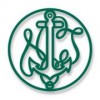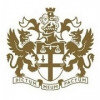Filter interviews by
Jayalakshmi micro Finance Interview Questions and Answers
Be the first one to contribute and help others!
Interview questions from similar companies

Engineering Manager Interview Questions & Answers
Commonwealth Bank of Australia, Indiaposted on 4 Feb 2025
I was interviewed in Jan 2025.
(4 Questions)
- Q1. System Design - how would design a trading system, what db, cloud you would consider and why? how would ensure data is real time not near real time? How would you set up devOps for this ?
- Q2. In which scenario , you would prefer to use RDBMS than NoSQL
- Q3. How would you decide which cloud infrastructure would be best for your application? In what scenario you feel Microservice might not be a good choice
- Q4. Basic concept - how hashmap works internally, Sharding, rate limiter , API gateway and their usage
(4 Questions)
- Q1. Explain role and responsibility in last project? given a chance what would you like to change
- Q2. How do you manage team and ensure on time delivery? your priorities and core values
- Q3. How do manager vendor ? If vendor is pushing you for a application from their side but you want to build it with your team, how are you going to handle it ?
- Q4. What all KPIs you will present to stakeholders in a project status presentation
(1 Question)
- Q1. STAR based questions on project management
(1 Question)
- Q1. Salary expectation and other discussions

I was interviewed in Dec 2024.
I attended a 1-hour interview for the Analyst role. The questions were easy to moderate and included a mix of tasks. I was asked to read a paragraph aloud while recording, which tested my communication skills. There were also logical reasoning questions and basic math problems on topics like distance and time. The process was smooth, and the questions focused on analytical thinking and clarity in communication.
(16 Questions)
- Q1. Introduce yourself
- Q2. What is trade life cycle
- Q3. What is option with example
- Q4. Difference between trial balance and balance sheet
- Q5. What is ETF
- Q6. What is mortgage back security
- Q7. What is stock exchange
- Q8. SEBI guidelines
- Q9. What is Repo rate
- Q10. Different between forward and future contact
- Q11. What is short selling
- Q12. Exel short cut
- Q13. Why do you want to work at Northern Trust?
- Q14. What qualifications and experiences make you a suitable candidate for this position?
- Q15. What are your strengths and weaknesses?
- Q16. Questions relating to vlook up and Advance excel formula
Interview Preparation Tips

Development Team Lead Interview Questions & Answers
London Stock Exchange Groupposted on 12 Feb 2025
I was interviewed in Jan 2025.
I was assigned a task to create a questionnaire consisting of five questions. I need to code, build, and provide instructions on how to use it.
(3 Questions)
- Q1. Questions on current project, core skills mainly on Jenkins, CI/CD, testing, SRE principles, monitoring, python coding.
- Q2. Why you want to join LSEG?
- Q3. What value can you bring in current team?
(1 Question)
- Q1. Discussions with the Director regarding scenario-based questions, such as how to handle a project in the event of an incident, and how to tackle and overcome such challenges?
Interview Preparation Tips

Data Analyst Interview Questions & Answers
Motilal Oswal Financial Servicesposted on 10 Jan 2025
I applied via Naukri.com and was interviewed in Dec 2024. There was 1 interview round.
(2 Questions)
- Q1. Interview was taken in malad on interface 7 building The relationship officer Vaibhav Panchal . He assigned Interviewer the way he was talking he was not able to speak in english half of the question i was...
- Q2. His english was poor How you will get the customer count who speak in english? he didn't gave me which table to fetch from ? * question changed get the customer from one table and count from the other ...
Interview Preparation Tips

I applied via campus placement at Kumaraguru College of Technology, Coimbatore and was interviewed in Nov 2024. There were 2 interview rounds.
The group discussion was conducted on the basic topic of "Education System in India." After announcing the topic, the HR provided three minutes for preparation, during which participants were allowed to take notes. Subsequently, each person spoke about the topic for 30 seconds. Following the individual presentations, a three-minute discussion took place among the members.
(4 Questions)
- Q1. What is meant by securities?
- Q2. What is meant by the repo rate and reverse repo rate?
- Q3. What is the difference between stocks and mutual funds?
- Q4. Can you provide an introduction about yourself and share details about your family background?
Interview Preparation Tips
- NISM VA
- NISM VII
- NISM VIII

Senior Analytics Consultant Interview Questions & Answers
Wells Fargoposted on 28 Nov 2024
I applied via Company Website and was interviewed in Oct 2024. There were 2 interview rounds.
(4 Questions)
- Q1. Filters in Tableau
- Ans.
Filters in Tableau allow users to focus on specific data points within a visualization.
Filters can be applied to dimensions or measures to narrow down the data being displayed.
Users can use various types of filters such as quick filters, context filters, and data source filters.
Filters can be used to show or hide data based on specific criteria, such as date ranges or categories.
Example: Applying a filter to show only
- Q2. Blending and joins in Tableau
- Ans.
Blending and joins in Tableau allow users to combine data from multiple sources for analysis and visualization.
Blending is used when data sources have a common field but different levels of granularity.
Joins are used when data sources have a common field and the same level of granularity.
Blending creates a virtual join, while joins physically combine the data.
Examples: Blending sales data from Excel with customer data ...
- Q3. LOD expressions in Tableau
- Ans.
LOD expressions in Tableau allow you to compute values at different levels of detail in a visualization.
LOD expressions include FIXED, INCLUDE, and EXCLUDE functions
FIXED LOD expressions compute values at a specific level of detail regardless of the visualization level
INCLUDE LOD expressions compute values at the specified level of detail and include other dimensions in the visualization
EXCLUDE LOD expressions compute ...
- Q4. Different types of Joins in SQL, difference between TRUNCATE and DELETE
- Ans.
Different types of joins in SQL include INNER JOIN, LEFT JOIN, RIGHT JOIN, and FULL JOIN. TRUNCATE is faster than DELETE as it removes all rows at once.
Types of joins: INNER JOIN, LEFT JOIN, RIGHT JOIN, FULL JOIN
TRUNCATE: removes all rows from a table without logging individual row deletions
DELETE: removes specific rows from a table and logs each row deletion
TRUNCATE is faster than DELETE as it does not log individual
(2 Questions)
- Q1. About my technical experience
- Q2. What will you do if you get the offer from multiple companies
Interview Preparation Tips
After the second round, I did not receive any feedback for several days, so I contacted HR to inquire about the status. They assured me they would provide an update, but I did not hear back. I reached out again and was told that I was not selected because I was "not technically strong." This reason seemed misleading, as the second round was not even technical in nature.
My impression is that my current salary expectations may have exceeded their budget for the role. Rather than acknowledging this, it seems they opted to cite a technical deficiency as the reason for my rejection, which I believe was not accurate.
Skills evaluated in this interview

I applied via Campus Placement and was interviewed in Nov 2024. There were 2 interview rounds.
The test will comprise a total of 60 questions, divided as follows: 70% of the questions will focus on finance and accounting, while the remaining questions will cover aptitude and English.
(1 Question)
- Q1. Zero coupon bonds, long-term liabilities, return on equity, debt-equity ratio, captial budgeting and techniques, bonds and its types, debt instruments meaning, collateral, mortgage, spin off, demerger, mer...
Interview Preparation Tips

I applied via LinkedIn and was interviewed in Nov 2024. There were 2 interview rounds.
Basic qsns and answers and personality test
(5 Questions)
- Q1. Family background question
- Q2. My hobbies and other things
- Q3. Discussion on family
- Q4. Work and course related
- Q5. Fresher so basic questions

I applied via Walk-in
(1 Question)
- Q1. Self intro , normal question like background
(1 Question)
- Q1. About differ based on what the role you looking for , basically mutual fund questions and and Excel
Interview Preparation Tips

Senior Network Engineer Interview Questions & Answers
SBI Securitiesposted on 20 Dec 2024
I applied via Recruitment Consulltant and was interviewed in Nov 2024. There were 2 interview rounds.
(2 Questions)
- Q1. Why are you switching the job?
- Ans.
Seeking new challenges and opportunities for growth in a different environment.
Looking for new challenges and opportunities for professional growth
Interested in working with new technologies or in a different industry
Seeking better work-life balance or career advancement
Company restructuring or changes in management
- Q2. Why do you want a hike?
- Ans.
I believe my skills and experience warrant a salary increase to reflect my value to the company.
I have gained additional certifications and skills since my last salary review.
I have taken on more responsibilities and projects that have contributed to the company's success.
I have received positive feedback from colleagues and supervisors on my performance.
I have researched industry standards and determined that my curre
(2 Questions)
- Q1. What are bgp attributes?
- Ans.
BGP attributes are used to influence the path selection process in BGP routing.
BGP attributes include AS_PATH, NEXT_HOP, LOCAL_PREF, etc.
AS_PATH attribute shows the path the route has taken through ASes.
NEXT_HOP attribute specifies the next hop IP address for the route.
LOCAL_PREF attribute is used to influence outbound traffic.
Examples of BGP attributes manipulation include AS_PATH prepending and setting LOCAL_PREF.
- Q2. What is route reflector?
- Ans.
A route reflector is a feature in BGP that helps reduce the number of IBGP peerings required in a network.
Route reflectors help in reducing the number of IBGP peerings in a network by allowing a route reflector to reflect routes to other routers.
They are used in large-scale networks to avoid the full mesh IBGP requirement.
Route reflectors can be configured in a hierarchy to further optimize route reflection in the netw
Interview Preparation Tips
Tell us how to improve this page.
Interview Questions for Popular Designations
Interview Questions from Similar Companies
Jayalakshmi micro Finance Reviews and Ratings
based on 1 review
Rating in categories

Wells Fargo

HSBC Group

Cholamandalam Investment & Finance

Citicorp
- Home >
- Interviews >
- Jayalakshmi micro Finance Interview Questions







